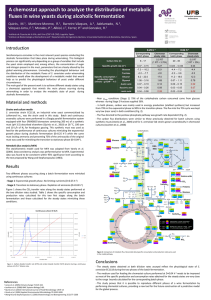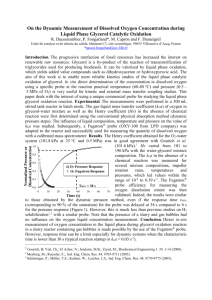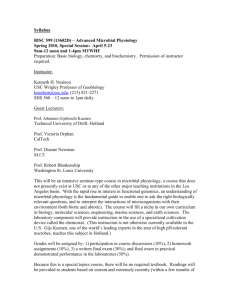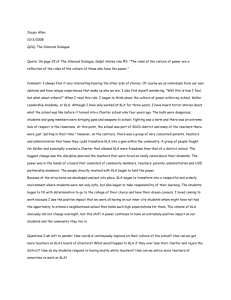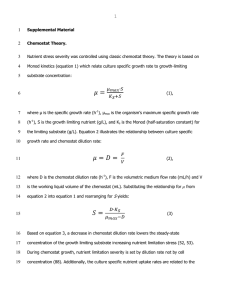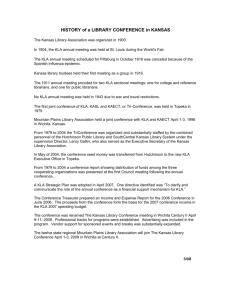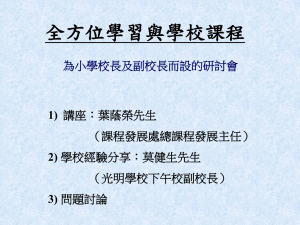MSE 2009
advertisement
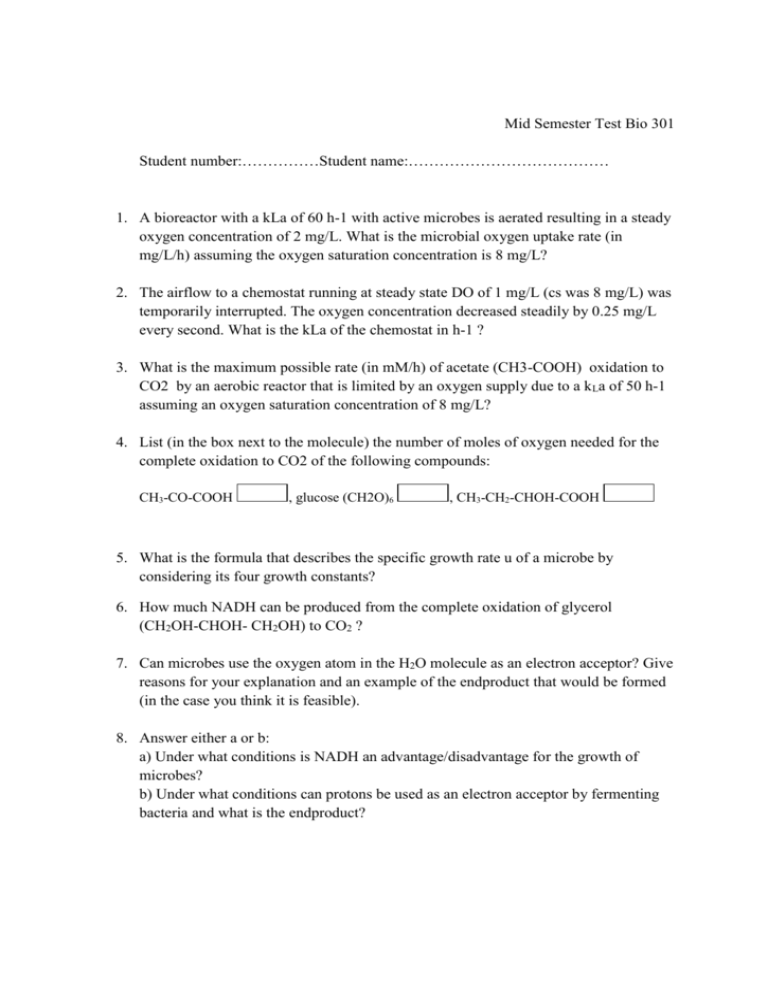
Mid Semester Test Bio 301 Student number:……………Student name:………………………………… 1. A bioreactor with a kLa of 60 h-1 with active microbes is aerated resulting in a steady oxygen concentration of 2 mg/L. What is the microbial oxygen uptake rate (in mg/L/h) assuming the oxygen saturation concentration is 8 mg/L? 2. The airflow to a chemostat running at steady state DO of 1 mg/L (cs was 8 mg/L) was temporarily interrupted. The oxygen concentration decreased steadily by 0.25 mg/L every second. What is the kLa of the chemostat in h-1 ? 3. What is the maximum possible rate (in mM/h) of acetate (CH3-COOH) oxidation to CO2 by an aerobic reactor that is limited by an oxygen supply due to a kLa of 50 h-1 assuming an oxygen saturation concentration of 8 mg/L? 4. List (in the box next to the molecule) the number of moles of oxygen needed for the complete oxidation to CO2 of the following compounds: CH3-CO-COOH , glucose (CH2O)6 , CH3-CH2-CHOH-COOH 5. What is the formula that describes the specific growth rate u of a microbe by considering its four growth constants? 6. How much NADH can be produced from the complete oxidation of glycerol (CH2OH-CHOH- CH2OH) to CO2 ? 7. Can microbes use the oxygen atom in the H2O molecule as an electron acceptor? Give reasons for your explanation and an example of the endproduct that would be formed (in the case you think it is feasible). 8. Answer either a or b: a) Under what conditions is NADH an advantage/disadvantage for the growth of microbes? b) Under what conditions can protons be used as an electron acceptor by fermenting bacteria and what is the endproduct? 9. Explain the effect of 3 of the four growth constants (umax, mS, kS, Ymax) on the maximum biomass productivity (Rmax) that is possible in a chemostat. State wether a doubling of each value would increase or decrease the (Rmax), estimate by how much and explain why. You may use sketch to illustrate your explanation on the back of this page. 10. Give two examples of organic electron acceptors used in anaerobic fermentations. Name the compound In which fermentation are they used Show either the structural formula or give the number of reducing equivalents (electrons) and number of carbons of the compound Give name or formula of the resultant end-product

